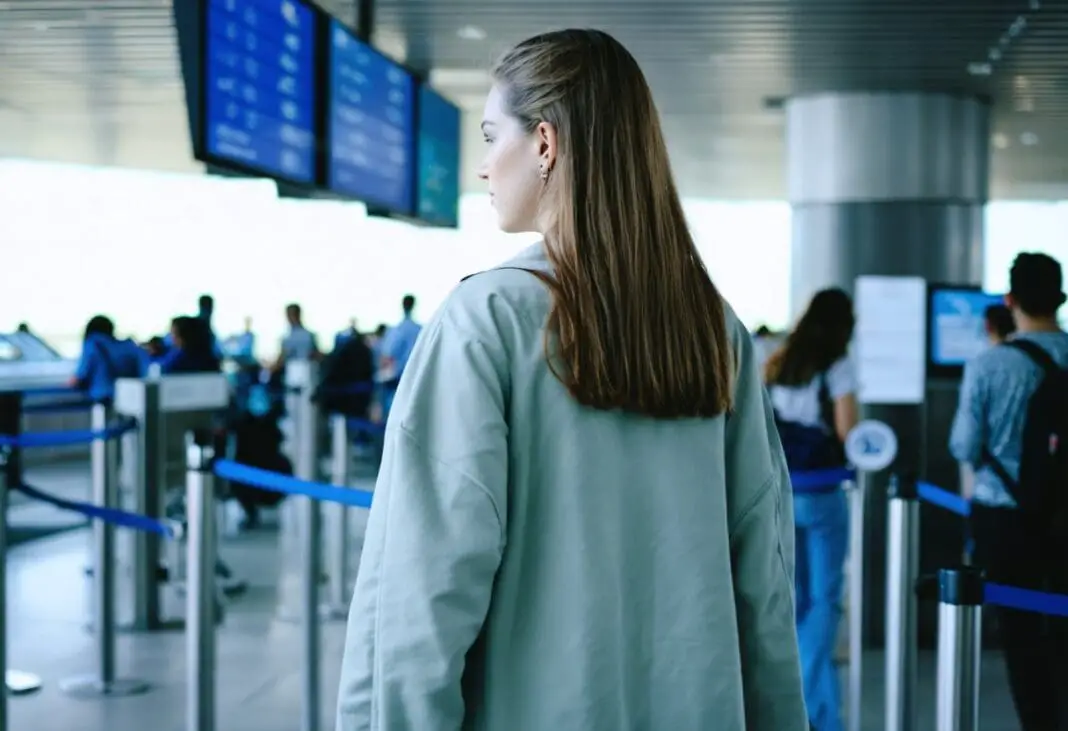Getting through airport security can feel like navigating a maze of rules and restrictions. Most people focus on what they can’t pack in their carry-on bags, but few consider how their clothing choices might cause unexpected delays. A growing number of frequent travelers and TSA agents are speaking out about specific items women wear that consistently trigger additional screening procedures. From experienced flight attendants to former security personnel, the message is clear: certain wardrobe choices can turn a quick security check into a time-consuming ordeal that nobody wants to deal with.
Skirts and dresses create major security complications
Walking through airport security in a flowing dress might seem like the perfect travel outfit, but it’s actually one of the worst choices for getting through TSA quickly. Security scanners have trouble seeing through the fabric layers that bunch up around legs, creating what agents call “dense areas” that require additional inspection. Whether it’s a tight mini skirt, a flowing maxi dress, or anything in between, these garments consistently trigger alarms that lead to pat-downs and additional screening time.
The problem gets worse when TSA agents can’t clearly see your body outline through loose-fitting or layered fabric. Former TSA agent Kimberly Pruitt explains that baggy clothing makes it easy to hide prohibited items, which automatically flags travelers for extra attention. If selected for additional screening, passengers wearing dresses may need to undergo uncomfortable pat-downs around their thighs or even face private screening rooms where they’ll be asked to remove the garment entirely.
Metal accessories and jewelry slow everything down
That statement necklace or stack of bracelets might complete your travel look, but metal accessories are guaranteed to cause problems at security checkpoints. Metal detectors pick up everything from belt buckles to bobby pins, and even small amounts of metal can trigger alarms that require manual inspection. Large earrings, chunky jewelry, and decorative hair accessories all need to be removed and placed in screening bins, which slows down the entire process for everyone.
The worst offenders are items with multiple metal components or those that are difficult to remove quickly. Hair ties with metal clasps, intricate bracelets with tiny clasps, and layered necklaces can take several minutes to remove and put back on. TSA agents also report that bobby pins are among the most problematic items because people often forget they’re wearing them, and even a few small pins can set off sensitive metal detectors.
Cargo pants with multiple pockets trigger searches
Cargo pants might seem like a practical travel choice with all those extra pockets for storing essentials, but they’re actually a red flag for security personnel. Each pocket creates a potential hiding spot that agents need to check, and the loose fit of most cargo pants makes it difficult for scanners to get a clear image. Even empty pockets can cause problems because the fabric bunching and multiple seams create irregular shapes that show up as suspicious areas on security screens.
The inspection process for cargo pants often involves manual pat-downs of every single pocket, which takes significantly longer than standard screening procedures. Former airport security personnel warn that forgotten items left in cargo pockets are one of the most common reasons for delays, as agents must thoroughly investigate any anomalies they detect. The combination of multiple pockets and loose fabric makes cargo pants a guaranteed way to slow down your trip through security.
Shoes with complex straps cause major delays
Footwear choices can make or break your airport security experience, and complicated shoes are among the biggest time-wasters at checkpoints. Boots with multiple buckles, sandals with intricate strap systems, and shoes with numerous ties all need to be completely removed for screening. While you’re struggling to unlace complicated boots or refasten multiple straps, other passengers are stuck waiting behind you in an increasingly long line.
The worst part about wearing complex shoes through security is having to put them back on while balancing your carry-on bags and personal items. High-heeled boots that require careful lacing, strappy sandals with multiple buckles, and athletic shoes with elaborate lacing systems all create bottlenecks that TSA agents actively discourage. Smart travelers opt for simple slip-on shoes that can be removed and replaced in seconds rather than minutes.
Belts with large buckles always set off alarms
Belt buckles are among the most predictable triggers for metal detectors, yet many travelers forget to remove them before walking through security scanners. Large decorative buckles, chains, and metal hardware on belts guarantee that you’ll need to step aside for additional screening. The metal content in most belt buckles is substantial enough to cause clear alarm signals that require manual inspection by security personnel.
Even small belt buckles can cause problems depending on the sensitivity settings of security equipment at different airports. Travel experts recommend choosing belt-free outfits or at least being prepared to remove your belt quickly and place it in a screening bin. The process of removing and replacing belts while juggling other personal items creates unnecessary stress and delays that experienced travelers learn to avoid entirely.
Layered clothing creates screening complications
Wearing multiple layers might keep you comfortable during temperature changes, but it creates serious complications for security screening equipment. Thick sweaters over shirts, multiple cardigans, and bulky outerwear all need to be removed and screened separately. The layered look that works well for variable airplane temperatures becomes a major hassle when you’re trying to move quickly through security checkpoints.
TSA agents have discretion about which layers need to be removed, which means you might be asked to take off items that other passengers get to keep on. Heavy sweaters, thick hoodies, and bulky vests often trigger requests for removal because they obscure body outlines on scanner screens. The unpredictability of which layers will need to come off makes it essential to wear appropriate undergarments and plan for the possibility of removing outer garments in public.
Clothing with sequins and metallic details triggers alarms
Sparkly tops and dresses with metallic embellishments might look great for travel photos, but they’re terrible choices for getting through airport security efficiently. Sequins, metallic threads, and decorative metal details all register on security scanners as potential threats that require additional investigation. Even small amounts of metallic decoration can trigger alarms that lead to time-consuming manual inspections.
The problem with metallic clothing details is that they’re often sewn throughout the entire garment, making it impossible for security personnel to quickly identify and clear the source of alarm signals. Sequined tops, shirts with metallic prints, and garments with decorative studs or grommets all fall into this problematic category. Security agents report that passengers wearing heavily embellished clothing almost always require additional screening time that could easily be avoided with simpler wardrobe choices.
Underwire bras frequently cause false alarms
The metal underwire in many bras is a common culprit behind unexpected security delays that catch travelers off guard. While most modern security equipment is calibrated to ignore typical underwire signatures, older machines or higher sensitivity settings can still flag these items for additional screening. The resulting pat-down inspections are uncomfortable and time-consuming, especially when travelers aren’t expecting them.
Some airports have more sensitive metal detection equipment than others, making underwire detection inconsistent and unpredictable. Women who regularly travel through the same airports might never have problems, then suddenly face delays at different locations with different equipment. Planning ahead with wireless bras or sports bras eliminates this variable entirely and ensures consistent, quick passage through security checkpoints regardless of which airport you’re using.
What to wear instead for smooth security screening
Smart airport fashion focuses on simplicity, comfort, and speed rather than style or complexity. Fitted pants or leggings eliminate the fabric bunching issues that cause problems with dresses and skirts. Simple slip-on shoes without metal hardware allow quick removal and replacement during screening. Minimal jewelry and accessories reduce the number of items that need to be removed and placed in security bins.
The ideal airport outfit consists of stretchy leggings or yoga pants, a simple top without metal decorations, and comfortable slip-on sneakers or flats. This combination provides comfort for long flights while ensuring the fastest possible passage through security checkpoints. Experienced travelers pack their dressier outfits in easily accessible parts of their carry-on bags and change after clearing security, avoiding all the hassles that come with wearing complicated clothing through TSA screening.
Airport security doesn’t have to be a stressful ordeal that eats up precious travel time. Simple wardrobe adjustments can transform your TSA experience from a frustrating bottleneck into a quick, efficient process that gets you to your gate faster. The next time you’re packing for a trip, remember that the most stylish airport outfit is the one that gets you through security without any delays or complications.

